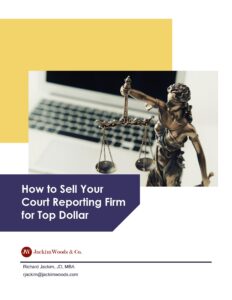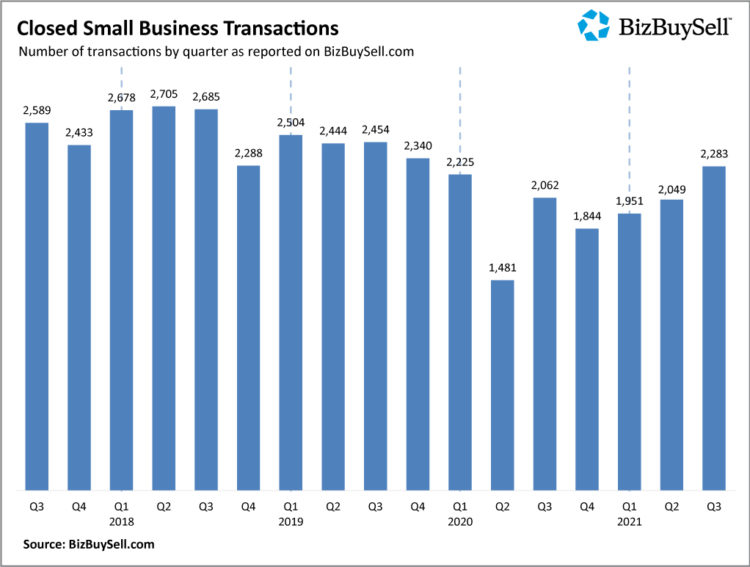
An Innovative Approach to Business Brokerage and M&A Fees
Working with a business broker or M&A advisor can significantly enhance your results when selling your business. At our firm, we recognize the distinct needs of each client and offer an innovative alternative to the conventional business broker fee structure. In addition to the traditional full-service commission or success-fee model, Jackim Woods & Co provides clients with the option to engage us as consultants and pay on an hourly basis, offering a more personalized approach tailored to your requirements.
Our innovative hourly billing option allows you to access our expert services as needed, ensuring you only pay for the specific assistance you need, resulting in significant cost savings. Regardless of the fee model chosen, we are committed to providing exceptional services and outcomes aligned with your unique objectives.
Deciding Between Fee Structures
Success-Fee Basis
PROS:
- Aligned Interests: Our fee is contingent upon the successful sale, aligning our interests with yours and motivating us to get the highest price for you.
- Minimal Upfront Costs: With only a small retainer upfront, you can minimize initial expenses.
- Confidence in Broker’s Ability: Our willingness to work on a success-fee basis reflects our confidence our ability to sell your business.
- Risk Mitigation: If the deal falls through, you incur no financial obligation other than the initial retainer, thereby reducing your financial risk.
CONS:
- Higher Overall Cost: The success fee, a percentage of the sale price, will usually result in higher costs compared to hourly billing.
- Focus on Larger Deals: Brokers may prioritize larger deals due to their compensation being tied to deal size.
- Possible Rush to Close: There’s a risk of prioritizing closing the deal over negotiating optimal terms for you.
Hourly Basis
PROS:
- Cost Control: Hourly billing offers predictability and manageability, especially for smaller transactions or prolonged processes, ensuring you pay only for the services you need.
- Flexibility: You can tailor our services to your needs, from brief consultations to having us run a comprehensive sell-side process for you.
- Objective Advice: Our fee structure ensures impartial advice focused on your best interests rather than simply closing the deal.
- Transparency: Transparent billing simplifies expense tracking and comprehension.
CONS:
- Upfront and Ongoing Costs: The hourly fee is due whether the deal closes or not, so the cost to you may be higher than the initial retainer under the success fee based approach.
- Less Incentive to Close Quickly: Because we are solely focused on providing you with impartial, objective advice, it could potentially prolonging the process.
Case Study
Recently, we assisted the owner of a medium-sized court reporting firm in California. With a business valued at $1M, she sought our expertise in navigating a sale. She had already been approached by several buyers, so she just needed our help determining what her firm was worth, analyzing each buyer’s offer, providing assistance in negotiations and counterproposals, and help responding to the buyer’s due diligence requests. Since she didn’t need us to run a full sell-side process, the consulting model was ideal for her. Typically, brokers charge an 8-10% success fee, translating to $80,000 in this case. Opting for our hourly consulting model, she saved a substantial amount. With 40 hours of consulting time spent, including valuation, negotiation, and due diligence assistance, her total fee amounted to $15,800, saving her $64,200 compared to the traditional business broker commission model.
Conclusion
Recognizing the uniqueness of each client’s needs, we offer both traditional commission and consulting fee models. Whether engaged using a success-fee arrangement or hourly billing, our commitment remains steadfast to providing top-tier service tailored to your objectives.
About the Author and Jackim Woods & Co
 Rich Jackim is an attorney, investment banker, and entrepreneur. For the last 25 years, Rich has been providing boutique investment banking services to small and middle-market companies in over 30 industries.
Rich Jackim is an attorney, investment banker, and entrepreneur. For the last 25 years, Rich has been providing boutique investment banking services to small and middle-market companies in over 30 industries.
In addition to running a successful M&A advisory firm, Rich founded a successful training and certification company called the Exit Planning Institute, which he sold to a private family office in 2012.
Rich is also the author of the critically acclaimed book, The $10 Trillion Dollar Opportunity: Designing Successful Exit Strategies for Middle Market Businesses. It became an Amazon best-seller in the business consulting category the year it was published.
If you own a business and are interested in exploring your options, I would welcome an opportunity to speak with you. There is no cost or obligation to you and all discussions are completely confidential.
Feel free to contact me at 224-513-5142 or rjackim@jackimwoods.com.
Read More
Acquisitions in the Court Reporting & Litigation Support Sector
This article provides a summary of mergers and acquisitions transactions in the Legal Services Support Sector between 2018 and 2024. We try to update this post every month as we close more deals and learn of other deals that have closed in the sector.
An Overview of the Court Reporting and Litigation Support Sector
The Litigation Support Services or Legal Services Support sector includes a wide range of companies that provide specialized services to legal professionals and organizations. Some of the types of companies in the sector include:
Court Reporting Firms: These companies provide skilled court reporters to create verbatim records of legal proceedings, depositions, and hearings.
Litigation Support Providers: These firms offer a wide range of services to assist with litigation, including eDiscovery, document management, trial preparation, and case management.
Legal Technology Companies: These companies develop and provide software solutions tailored to the needs of legal professionals, such as case management software, document review platforms, and legal research tools.
Legal Research and Publishing Companies: These entities produce and distribute legal research materials, including case law, statutes, regulations, and legal commentary.
Legal Consulting Firms: These firms offer strategic advice and consulting services to law firms, corporate legal departments, and other legal entities on various aspects of legal practice, including practice management, technology adoption, business development, trial preparation, jury selection, etc.
Videography Services: These companies specialize in recording video and audio records of legal proceedings, depositions, and interviews and converting them into written transcripts.
Forensic Accounting and Investigation Firms: These firms provide financial and investigative services to support litigation, including forensic accounting, fraud investigation, asset tracing, and expert witness testimony.
Legal Staffing and Recruitment Agencies: These firms specialize in placing legal professionals, including attorneys, paralegals, legal secretaries, and support staff, with law firms, corporate legal departments, and government agencies.
Legal Process Outsourcing (LPO) Companies: These organizations offer outsourced legal services to law firms and corporations, including document review, contract drafting, intellectual property management, and legal research. This subsector is going through rapid change as artificial intelligence solutions become more integrated in their offerings.
Court Technology and Services Providers: These companies develop and implement technology solutions for courtrooms and legal proceedings, such as electronic filing systems, court management software, and audiovisual equipment for trials and hearings.
Mediation and Arbitration Services: These organizations facilitate alternative dispute resolution processes, including mediation and arbitration, to help parties resolve legal disputes outside of traditional litigation.
Legal Education and Training Providers: These entities offer continuing legal education (CLE) programs, professional development courses, and training seminars for legal professionals to enhance their skills and knowledge in various areas of law and practice.
Court Reporting and Litigation Support Services Consolidation
The legal and litigation support sector is experiencing a long-term consolidation by several large national players and about a dozen smaller regional companies.
Here is a summary of the factors driving this long-term consolidation.
- Professional Shortage: There’s a notable shortage of skilled court reporters, partly due to an aging workforce and fewer new entrants in the field. Larger firms, through consolidation, can better manage this talent crunch by pooling resources and offering more attractive career paths.
- Technological Advancements: The court reporting industry, like many others, is rapidly evolving due to technology. Advancements in digital recording, real-time transcription, and even AI-powered transcription services are reshaping the landscape. Firms are consolidating to better invest in and leverage these technologies. It’s a bit like the tech trends we see in other sectors, where staying ahead of the curve is crucial.
- Increasing Demand for Legal Services: There’s a growing demand for legal services, partly due to increased regulatory complexities and a more litigious society. This demand extends to court reporting services, which are essential for legal proceedings. Larger firms, through consolidation, can handle a higher volume of work more efficiently.
- Economies of Scale: By consolidating, court reporting firms can achieve economies of scale. This means they can offer services at a lower cost while improving quality. It’s a classic business move – think of it like big tech firms merging to streamline their operations and cut down on expenses.
- Market Fragmentation: The court reporting industry is pretty fragmented, with many small players. This fragmentation makes it ripe for consolidation, as larger firms can acquire smaller ones to expand their market share and client base.
- Diversification of Services: The large national court reporting firms are diversifying their services to include things like legal videography, translation, litigation consulting, eDiscovery, and document management services. By consolidating, firms can offer a broader range of services to their clients, making them a one-stop shop for legal support services.
- Client Expectations: Clients are increasingly expecting more comprehensive and sophisticated services. Larger, consolidated firms are often better equipped to meet these expectations with their broader range of services and technological capabilities.
Due to these long-term factors, we anticipate this consolidation to continue for the foreseeable future.
Mergers and Acquisitions in the Court Reporting and Litigation Support Industry
The following section outlines a comprehensive summary of mergers and acquisitions transactions within the legal and litigation support services sector spanning the period from 2018 to 2024. This curated list is updated on a monthly basis to reflect the latest developments and transitions within the industry.
| Buyer | Seller | Date | Subsector |
| A Strategic Buyer | The College of Court Reporting | 6/28/2024 | Court Reporting Training |
| DepoLink Court Reporting | Robert Cirillo, Inc. | 6/5/2024 | Court Reporting |
| Lexitas | LawGistic Partners | 5/8/2024 | Service Process & Delivery |
| Veritext Legal Solutions | Anderson Reporting | 5/1/2024 | Court Reporting |
| U.S. Legal Support Inc. | Wendy Ward Roberts & Associates | 4/30/2024 | Court Reporting |
| Veritext Legal Solutions | Twin West Reporting | 4/16/2024 | Court Reporting |
| Veritext Legal Solutions | L.A. Court Reporters | 4/16/2024 | Court Reporting |
| Veritext Legal Solutions | Iseminger & Associates | 4/16/2024 | Court Reporting |
| Veritext Legal Solutions | Cavalier Reporting | 4/16/2024 | Court Reporting |
| Lexitas | Kopy Kat | 4/1/2024 | Record retrieval & copy services |
| Magna Legal Services | Jones & Fuller Court Reporting | 2/21/2024 | Court Reporting |
| Lexitas | Medical Legal Reproductions | 2/14/2024 | Record retrieval & copy services |
| Array | Alliance Imaging, LLC | 2/6/2024 | eDiscovery, Data Management |
| Veritext | Dianne Jones & Associates | 1/31/2024 | Court Reporting |
| Aptus Court Reporting | Sheri Bell Reporting | 1/30/2024 | Court Reporting |
| Complete Legal | Frontline Managed Service’s eDiscovery unit | 1/23/2024 | eDiscovery, Data Management |
| Magna Legal Services | Zanaras Reporting & Video | 12/7/2023 | Court Reporting |
| Osano | WireWheel | 12/15/2023 | Compliance solutions |
| Esquire | Hill & Romero Court Reporters | 12/15/2023 | Court Reporting |
| Cristina and Jerry Coash Jr. | Coash Court Reporting & Video | 11/30/2023 | Court Reporting |
| Lexitas | Evolution Process Service | 11/21/2023 | Process server |
| Exterro | Divebell | 11/1/2023 | eDiscovery |
| Wolters Kluwer | MFAS | 10/31/2023 | Tax Content |
| Veritext Legal Solutions | Metropolitan Court Reporters | 10/14/2023 | Court Reporting |
| Veritext Legal Solutions | Wasileski Court Reporting | 9/28/2023 | Court Reporting |
| Lexitas | Esquire Assist | 9/26/2023 | Corporate Filing/Registered Agent |
| Lexitas | AAAgent Services | 9/26/2023 | Corporate Filing/Registered Agent |
| Veritext Legal Solutions | Atchison & Denman | 9/14/2023 | Court Reporting |
| U.S. Legal Support | TrialEx Legal Graphics & Trail Consulting | 8/21/2023 | Litigation Consulting |
| Veritext Legal Solutions | M&M Court Reporting | 6/25/2023 | Court Reporting |
| U.S. Legal Support Inc. | Summit Court Reporting | 6/23/2023 | Court Reporting |
| Lexitas | Imagine Reporting | 6/20/2023 | Court Reporting |
| Veritext Legal Solutions | Litigation Services | 4/28/2023 | Court Reporting |
| Veritext Legal Solutions | Augusta Scribes | 4/6/2023 | Court Reporting |
| Lexitas | Elite-Brentwood Reporting | 3/21/2023 | Court Reporting |
| Lexitas | Enright Court Reporting | 3/7/2023 | Court Reporting |
| Veritext Legal Solutions | Garcia McCall Court Reporters | 3/3/2023 | Court Reporting |
| Veritext Legal Solutions | Bridges Court Reporting | 2/1/2023 | Court Reporting |
| Lexitas | Kusar Court Reporters | 1/31/2023 | Court Reporting |
| Lexitas | HIQ | 1/17/2023 | UCC & Lien Search |
| Lexitas | TRAC | 1/17/2023 | Corporate Filing/Registered Agent |
| Array | Compass Reporting | 12/31/2022 | Court Reporting |
| Lexitas | TaylorMorse Record Retrieval | 12/21/2022 | Data management |
| Veritext Legal Solutions | Mainland Reporting | 12/20/2022 | Court Reporting |
| Veritext Legal Solutions | Hart Reporting | 12/16/2022 | Court Reporting |
| Lexitas | AdvancedONE | 11/30/2022 | Court Reporting |
| Lexitas | Depo International | 11/8/2022 | Court Reporting |
| Lexitas | Oasis Reporting Services | 10/19/2022 | Court Reporting |
| Magna Legal Services | Barkley Court Reporters | 10/12/2022 | Court Reporting |
| Lexitas | Grove & Associates | 10/4/2022 | Court Reporting |
| Lexitas | Allstate Corporate Services | 9/23/2022 | Corporate Filing/Registered Agent |
| Stewart Richardson Deposition Services | Seidel & Sasse Court Reporters | 9/19/2022 | Court Reporting |
| Veritext Legal Solutions | Parise & Associates | 9/9/2022 | Court Reporting |
| Veritext Legal Solutions | Anthem Reporting | 9/9/2022 | Court Reporting |
| Veritext Legal Solutions | Paul Baca | 9/9/2022 | Court Reporting |
| LITIGATION SERVICES (Veritext) | Central Court Reporting & Video | 8/22/2022 | Court Reporting |
| Lexitas | Phipps Reporting | 7/19/2022 | Court Reporting |
| Esquire Deposition Solutions | TSG Reporting, Inc. | 7/13/2022 | Court Reporting |
| Veritext Legal Solutions | Doris Wong | 6/23/2022 | Court Reporting |
| Veritext Legal Solutions | Advanced Reporting Solutions | 6/13/2022 | Court Reporting |
| Lexitas | Yorkson Legal Staffing | 6/1/2022 | Court Reporting |
| Veritext Legal Solutions | Associated Reporting & Video | 5/16/2022 | Court Reporting |
| Veritext Legal Solutions | Richards Court Reporting | 4/4/2022 | Court Reporting |
| Veritext Legal Solutions | Musetta & Associates | 3/28/2022 | Court Reporting |
| Veritext Legal Solutions | Cady Reporting | 3/28/2022 | Court Reporting |
| U.S. Legal Support | Baton Rouge Court Reporters | 3/21/2022 | Court Reporting |
| Veritext Legal Solutions | Court Reporters of Louisiana | 3/21/2022 | Court Reporting |
| Empire Technologies Risk Management | L2 Services | 8-Mar-22 | Digital Scanning |
| Lexitas | Strehlow Court Reporting | 2/22/2022 | Court Reporting |
| LITIGATION SERVICES (Veritext) | Merit Court Reporting | 12/27/2021 | Court Reporting |
| Esquire | Willette Court Reporting | 7/13/2021 | Court Reporting |
| Veritext Legal Solutions | Brown & Jones Reporting | 6/2/2021 | Court Reporting |
| Brooks Court Reporting, Inc. | Cleeton Davis Court Reporters | 5/1/2021 | Court Reporting |
| Aptus Court Reporting | The Best Evidence, Inc. | 1/24/2020 | Court Reporting |
| LITIGATION SERVICES (Veritext) | Verbatim Reporting Service | 1/14/2020 | Court Reporting |
| U.S. Legal Support | DecisionQuest Trial Consulting | 10/1/2019 | Litigation Consulting |
| U.S. Legal Support | Litivate Reporting & Trial Services | 9/10/2019 | Court Reporting |
| Regal Court Reporting | Kelli Norden and Associates (KNA) | 6/11/2019 | Court Reporting |
| LITIGATION SERVICES (Veritext) | Kim Thayer & Associates | 6/3/2019 | Court Reporting |
| U.S. Legal Support | Hunter + Geist, Inc. | 5/1/2019 | Court Reporting |
| Veritext Legal Solutions | Epiq | 3/27/2019 | Court Reporting |
| Huseby | Discovery Litigation Services | 3/12/2019 | Court Reporting |
| LITIGATION SERVICES (Veritext) | Superior Court Reporting | 9/5/2018 | Court Reporting |
| LITIGATION SERVICES (Veritext) | Keleher’s | 7/3/2018 | Court Reporting |
| LITIGATION SERVICES (Veritext) | Cameo Reporting | 5/30/2018 | Court Reporting |
In addition to the publicly announced transactions mentioned above, we estimated that several dozen additional transactions take place each year involving smaller court reporting, eDiscovery, and legal support service companies. These smaller transactions are often not formally announced through press releases, but contribute greatly to the dynamic landscape of industry consolidation.
Other Relevant Articles Related to Court Reporting:
Readers may also benefit from exploring our related articles regarding the court reporting and litigation support services sector, including:
Court Reporting & Litigation Support Industry is Ripe for Consolidation
What’s My Court Reporting Firm Worth? – Simple Rules of Thumb updated for 2023
White Paper – The Ultimate Guide to Selling Your Court Reporting Firm for Top Dollar
Jackim Woods’ Court Reporting Practice Group
About the Author and Jackim Woods & Co.
 Rich Jackim is an attorney, investment banker, and entrepreneur. For the last 25 years, Rich has been providing boutique investment banking services to small and middle-market companies in the court reporting and litigation support sector.
Rich Jackim is an attorney, investment banker, and entrepreneur. For the last 25 years, Rich has been providing boutique investment banking services to small and middle-market companies in the court reporting and litigation support sector.
In addition to running a successful M&A advisory firm, Rich founded a successful training and certification company called the Exit Planning Institute, which he sold to a private family office in 2012.
Rich is also the author of the critically acclaimed book, The $10 Trillion Dollar Opportunity: Designing Successful Exit Strategies for Middle Market Businesses. It became an Amazon best-seller in the business consulting category the year it was published.
Jackim Woods & Co offers skilled mergers and acquisitions advisory services to court reporting firms, digital reporting and videography firms, court reporting schools, eDiscovery companies, and legal contract staffing companies in both sell-side and buy-side transactions. Jackim Woods & Co has arranged over 100 successful transactions, ranging in value from less than one million to more than eighty million dollars.
If you own an court reporting firm, legal support services business, or litigation support company and are interested in exploring your options, I would welcome an opportunity to speak with you. There is no cost or obligation to you and all discussions are completely confidential.
Feel free to contact me at 224-513-5142 or rjackim@jackimwoods.com.
Read More
How To Guide to Selling Your Court Reporting Firm for Top Dollar
I’m pleased to announce that I just published a free 17-page guide to Selling your Court Reporting Firm for Top Dollar. This comprehensive guide provides a lot of useful information as you begin to think about selling your court reporting firm, so I thought it would be helpful to provide an outline of the topics covered.
The Ultimate Guide to Selling Your Court Reporting Firm for Top Dollar

Introduction
- Overview of the complexities and rewards of selling a court reporting firm.
- Importance of understanding the sale process and strategizing your exit for a profitable transition.
Understanding the Value of Your Court Reporting Firm
- Critical first step: Determine your firm’s fair market value.
- Unique and valuable aspects of your business in the marketplace.
- Importance of working with an experienced business broker in the court reporting sector.
Key Non-Financial Factors Affecting Firm Value
- Client Base:
- A diverse and loyal client base as a primary asset and value driver.
- Contractors/Reporters:
- The significance of the experience and tenure of court reporters or contractors.
- Technology:
- Adoption of cutting-edge technologies as a value enhancer.
- Administrative Staff:
- The expertise and experience of administrative staff in maintaining service quality.
Valuation Rules of Thumb
- The role of EBITDA and SDE in business valuation.
- Importance of accounting for unique value drivers and detractors for accurate valuation.
The Sales Process
- Steps and timeline for selling a court reporting firm.
- Importance of preparation for a smooth and successful sale.
Preparing Your Firm for Sale
- Financial statement organization and operational process documentation.
- Emphasizing the necessity of up-to-date accounting and efficient operational processes.
Marketing Your Court Reporting Firm
- The need for creating a compelling offering package and contacting potential buyers.
- Utilizing digital marketing and leveraging the expertise of business brokers.
The Role of Professional Advisors
- Advantages of working with a business broker specialized in court reporting firms.
- Mitigating risks such as low-ball offers, due diligence failures, and distractions during the sales process.
Navigating Negotiations
- Understanding buyer motivations and maintaining flexibility.
- The importance of negotiating with multiple buyers simultaneously to secure the best deal.
Choosing the Right Buyer
- Balancing financial offers with cultural and operational fit.
- Evaluating different types of buyers: big box firms, regional firms, and individual entrepreneurs.
The Closing Process
- Steps involved in closing the sale, including due diligence and finalizing financial terms.
- The significance of definitive legal documents at closing.
Embracing the Future Post-Sale
- The emotional and practical aspects of life after selling your business.
- Opportunities for new ventures and personal growth.
Conclusion
- Summarizing the journey of selling a court reporting firm.
- Encouragement to contact a professional advisor for guidance and valuation.
Download Your Copy Here
Download your free copy of this useful white paper here.
About the Author and Jackim Woods & Co.
 Rich Jackim is an attorney, investment banker, and entrepreneur. For the last 25 years, Rich has been providing boutique investment banking services to small and middle-market companies in the court reporting and litigation support sector.
Rich Jackim is an attorney, investment banker, and entrepreneur. For the last 25 years, Rich has been providing boutique investment banking services to small and middle-market companies in the court reporting and litigation support sector.
In addition to running a successful M&A advisory firm, Rich founded a successful training and certification company called the Exit Planning Institute, which he sold to a private family office in 2012.
Rich is also the author of the critically acclaimed book, The $10 Trillion Dollar Opportunity: Designing Successful Exit Strategies for Middle Market Businesses. It became an Amazon best-seller in the business consulting category the year it was published.
Jackim Woods & Co offers skilled mergers and acquisitions advisory services to court reporting firms, digital reporting and videography firms, court reporting schools, eDiscovery companies, and legal contract staffing companies in both sell-side and buy-side transactions. Jackim Woods & Co has arranged over 100 successful transactions, ranging in value from less than one million to more than eighty million dollars.
If you own an court reporting firm or litigation support company and are interested in exploring your options, I would welcome an opportunity to speak with you. There is no cost or obligation to you and all discussions are completely confidential.
Feel free to contact me at 224-513-5142 or rjackim@jackimwoods.com.
Read More
Acquisitions in the Education and Edtech Sectors in 2024
The following is a summary of mergers and acquisitions transactions in the education and edtech sectors in 2024. We will update this post every two weeks as we work with more clients and learn of other deals in the sector.
The education and edtech sectors have been off to a slow start in 2024. This is following a significant drop in valuations in 2022 and 2023 as edtech companies no longer benefited from the COVID boost in 2022, and many were no longer profitable in 2023.
For many in the industry, 2023 was a tumultuous year. Numerous deals were close to closing but fell apart during due diligence. Interest rates continued to rise, inducing anxiety around the cost of borrowing and requiring buyers to require a higher overall return on their investment, which depressed valuations.
At the same time, investors had to rethink their investment criteria due to a rash of bad decisions they made during the frenzy of the COVID pandemic. Since then, most Edtech investors opted to take a much more cautious and conservative approach after making investments at inflated valuations in 2020 and 2021 that might have made sense during COVID, but now appear ridiculous in hindsight. Post-COVID, entire segments of the education sector have been shaken up – from the increased regulation on for-profit Title IV colleges and regulations that effectively put OPM providers “on life support” to concerns about the implications surrounding the expiration of ESSER funds and the effect that will have on preK-12 education.
As a result, valuations for small, medium, and large edtech companies are back to their pre-COVID levels and are still significantly higher than valuations for traditional businesses. The average small and medium-sized edtech company is valued at 2x to 3x trailing twelve-months annual recurring revenue.
Acquisitions in the Education and Edtech Sectors in 2024
Below is a summary of the mergers and acquisition transactions in the education and edtech sectors so far in 2024. This is by no means an exhaustive list as many smaller transactions are never announced. This list only represents the deals we have learned about through our network or that we have been directly involved in. I’ll do my best to update the list every two weeks.
In August,
Roper Technologies agreed to acquire Transact Campus, a higher ed payment and ID company, for $1.5 billion.
IT company Climb Global Solutions acquired Douglas Stewart Software & Services, an SaaS solutions company focused on education, for $20.3 million.
In July,
Neuberger Berman, a U.S. asset manager, is close to acquiring a minority stake in Nord Anglia Education, an international network of schools. Insiders report that the Neuberger Berman will invest $15 billion in the deal. That would be the largest K-12 deal in years.
IXL Learning, the company that owns Rosetta Stone and Dictionary.com, acquired Carson Dellosa Education, a teaching supplies publisher. The amount was not disclosed.
Instructure, the public company that makes the Canvas learning management system that is used by many schools and colleges, will be taken private by the large private equity group, KKR in a transaction worth $4.8 billion. That’s the single largest edtech deal in years.
Intelvio, a healthcare education company backed by Eden Capital, acquired the Professional Crisis Management Association (PCMA). PCMA is a crisis management training and certification company based in Sunrise, Florida. The acquisition enhances Intelvio’s existing behavioral health offerings and expands the Company’s overall healthcare training platform.
Edwin Group, the UK’s largest provider of supply teachers, what we in the U.S. call “substitute teachers” was acquired by Quad Partners, a U.S. based private equity firm, highlighting the potential growth of solutions to address global teacher shortages.
The animation studio Hobbes was acquired by Duolingo, the very popular language learning app. No terms were disclosed.
The Indian edtech giant Byju filed for bankruptcy protection. The company will likely sell off its operating divisions and edtech products. This flood of deals on the market is likely to depress valuation of edtech companies for the next 12 months.
EdPower, a LMS provider in the U.S. was acquired by Prometric, a US-based testing and assessment provider. The terms were not disclosed.
Genius Teacher, an Indian EdTech that provides content for primary school teachers was acquired by Schoolnet, a US K12 management system.
In June,
the College of Court Reporting, an Indiana-based nationally accredited, degree-granting court reporting college was acquired by a strategic buyer that owns and operates several other vocational colleges. Jackim Woods represented the seller and arranged the transaction.
Instructure, (NYSE: INST) a Utah-based learning management software company, acquired Scribbles Software, a North Carolina-based company that provides software solutions for K-12 school districts, to bolster it’s K12 offering. The terms of the transaction were not disclosed.
TicTac Group, a Swedish company providing e-learning solutions, acquired Skillhabit, a Swedish AI-driven learning platform.
PepTalkHer, a New York-based coaching platform, acquired Mettacool, a Wisconsin-based E-learning and coaching platform. The terms of the transaction were not disclosed.
Raptor Technologies, a Texas-based provider of school safety software, acquired PAYK12, an Indiana-based cloud-based education finance management company.
Children’s publisher Scholastic acquired 9 Story Media Group, which produces children’s content for $182 million.
While not an acquisition, there is an interesting update on Byju. Investment giant Prosus says that wrote off its $2.1 billion investment in Byju’s stating they now believe its 9.6% investment in the company is worthless. This will certainly have a chilling effect on valuations in the edtech sector.
ClearCompany, a provider of human capital management software, owned by Gemspring Capital, acquired Brainier Solutions Inc. (“Brainier”), a leading provider of innovative learning management software for corporate clients. The terms of the deal were not disclosed.
In May,
PowerSchool, a K-12 software company, announced that it may go private in a $6 billion deal with Bain Capital, according to press reports. The deal is pending. We will update the details once the deal is finalized. This is likely to be the largest edtech deal to date.
Class Over, a K-12 online course provider, is being merged with Battery Future Acquisition in a $135 million deal.
Domoscio, a French adaptive learning platform, was acquired by Rise Up, a French active learning platform, to expand its offerings in the space.
Tustawi, a digital education platform in Kenya, was purchased by Castnet Learning, an online education platform. This acquisition will allow Castnet to expand its service offerings to Kenya.
95 Percent Group, a literacy curriculum provider in the US, acquired Sortegories, a language learning app for K12 students. This acquisition will expand 95 Percent Group’s digital offerings for language learning.
In April,
Basis Vectors Capital, a private equity firm focused on vertical SaaS, acquired Cadient Talent, a talent acquisition solutions provider in the hourly hiring sector , to expand their portfolio of SaaS solutions and to expand Cadient’s growth. The terms were not disclosed.
Follet School Solutions acquired MasterLibrary, a K-12 solutions provider. The amount was not disclosed.
Wonderschool acquired ChildcareMatters, a substitute teacher staffing platform. The amount was not disclosed.
LEORON Institute, a corporate training EdTech company, acquired UAE-based XpertLearning, the leading professional training and development provider in the Middle East, to expand their market expansion in the region.
GenSpark, a tech training and development solutions provider, acquired ProGrad, an Indian end-to-end sourcing, screening, and training solutions provider, to broaden their service offerings in the APAC and Indian markets.
Kangarootime, a childcare management software provider for early education centers, acquired Clay, an AI-powered lesson planner. The terms were not disclosed.
Keystone Partners, a career transition and outplacement services provider, acquired CEC, which offers certification and training for coaching careers. The amount wasn’t disclosed.
Viking Mergers & Acquisitions, a business brokerage firm, acquired Sea School, a maritime licensing and education provider.
CareerArc, a hiring and recruiting company, acquired Lumina, a leading SaaS platform for generating visual job postings at scale. The amount wasn’t disclosed.
Wakelet, a content curation platform, acquired Bulb, a digital portfolio provider used primarily by teachers and job applicants, for an undisclosed amount.
IXL Learning, creator of adaptive online learning systems, as well as the owner of Rosetta Stone, acquired Dictionary.com for an undisclosed amount.
Wonderschool, a startup that provides software and support to help individuals and local governments spin up childcare businesses, has acquired EarlyDay, which operates an early childhood educator marketplace. The terms of the transaction were not disclosed.
In March,
the children’s publisher Scholastic acquired 9 Story Media, a children’s content producer and distributor, for a reported $186 million.
StraighterLine, an online course provider, acquired ProSolutions Training, an early childhood education training provider, for an undisclosed amount.
The online learning platform Skillshare completed its acquisition of Superpeer. The acquisition will expand Skillshare’s on-demand course offerings. The terms of the deal were not disclosed.
Accenture acquired Udacity, one of the pioneers of large-scale online courses. The terms of the deal were not disclosed, but it was announced at the same time Accenture announced a $1 billion investment to create a new learning platform focused on AI, called LearnVantage. Accenture reportedly paid only $80 million for Udacity, which back in 2012 had raised over $300 million in venture capital investments.
Leeds Equity Partners acquired TouchMath, a K-8 math curriculum provider.
Wayside Publishing, a U.S.-based language learning solutions provider, acquired Nualang, which develops tools for world language classrooms. The transaction details were not disclosed.
Kido International, an international daycare and preschool design, technology and learning company, acquired Amelio Early Education, a preschool and daycare operator. The amount was not disclosed, but is estimated to be north of $7.5 million.
Ellucian acquired EduNav, an academic planning and student success tool platform, for an undisclosed amount.
HMH acquired Writable, which provides a K-12 writing assessment and practice solution.
In February,
Cognia, a forward thinking nonprofit organization laser-focused on improving educational opportunities for all learners, has agreed to purchase CenterPoint Education Solutions, a nonprofit organization that specializes in building cohesive education systems consisting of high-quality curriculum, aligned assessments, and expert professional learning.
Podium Education, a career accelerator platform that partners with colleges to offer for-credit learning experiences to help students gain in-demand skills and work experience as part of their degree, acquired Untapped, a career opportunities software company, for an undisclosed amount.
Savvas, a K-12 solutions company, acquired Outlier.org, which offers online dual credit courses. The amount was not disclosed.
The National Association for Community College Entrepreneurship acquired SkillPointe, a skill-based career platform, for an undisclosed amount.
Avenue Growth Partners acquired a minority stake in BridgeCare, an infrastructure platform for early childhood education, for $10 million.
Google acquired Edlyft, an AI tutoring platform, for an undisclosed amount.
In January,
Oliver Solutions, a digital training platform, acquired Spiffy for an undisclosed amount.
Instructure Holdings, Inc. (Instructure) (NYSE: INST), the leading learning ecosystem and maker of Canvas, announced today it has completed the acquisition of Parchment, the world’s largest credential management platform and network.
Avathon Capital acquired Magical Beginnings, a network of early childhood learning centers in Massachusetts, for an undisclosed amount.
Google acquired Edlyft AI Tutor, an AI-powered STEM upskilling platform that seeks to make computer science education more accessible, especially for Black students.
Quantum5, an automotive training platform acquired Trivie, an AI-powered provider of a workforce engagement platform that personalizes learning content.
Avathon Capital, a private equity firm, acquired Magical Beginnings Learning Centers, a Massachusetts-based network of early childhood education centers.
ETS, the language testing company that runs TOEFL, acquired PSI, a U.S.-based language testing company. The amount was not disclosed.
Follet School Solutions, a K-12 edtech company, acquired Livingtree, a platform for fundraising management, for an undisclosed amount.
PowerSchool acquired Allovue, a K-12 financial planning, budgeting and analytics software provider, for an undisclosed amount.
Intelvio, a healthcare education company backed by Eden Capital, acquired Classward, an online provider of continuing education for aspiring and current EMS professionals. Classward’s EMS content complements Intelvio’s growing platform focused on solving healthcare employee shortages across the US.
Upgrad Education announced that it is in negotiations to acquire Udacity. It also stated that it intends to raise $100 million, a large part of which will be used to finance the purchase, according to media reports.
We will update this post every two weeks as we learn about other transactions and close more deals in the education sector.
Read our previous article for information about mergers and acquisitions deals in the education sector in 2003 or our previous article about mergers and acquisitions deals in the education and edtech sectors that closed in 2002.
About the Author and Jackim Woods & Co.
 Rich Jackim is an education industry investment banker, education industry entrepreneur, and former mergers and acquisitions attorney.
Rich Jackim is an education industry investment banker, education industry entrepreneur, and former mergers and acquisitions attorney.
For the last 25 years, Rich has been providing boutique investment banking services to middle-market companies in the education sector.
Rich also founded a successful training and certification company called the Exit Planning Institute, which he sold to a private equity group in 2012.
Rich is also the author of the critically acclaimed book, The $10 Trillion Dollar Opportunity: Designing Successful Exit Strategies for Middle Market Businesses.
Jackim Woods & Co offers skilled mergers and acquisitions advisory services to privately owned schools, colleges, and EdTech companies in both sell-side and buy-side transactions. Jackim Woods & Co has arranged over 100 successful transactions, ranging from less than one million to more than eighty million dollars in value.
If you own an education-related business and are interested in exploring your options, I would welcome an opportunity to speak with you. Feel free to contact me at 224-513-5142 or rjackim@jackimwoods.com.
Read More
Court Reporting Acquisitions in 2023
This article provides a summary of mergers and acquisitions transactions in the court reporting sector in 2023. We try to update this post every month as we close more deals and learn of other deals that have closed in the sector.
Court Reporting Consolidation
The court reporting and litigation support sector is experiencing a long-term consolidation by several large national players and about a dozen smaller regional companies.
Here is a summary of the factors driving this long-term consolidation.
- Professional Shortage: There’s a notable shortage of skilled court reporters, partly due to an aging workforce and fewer new entrants in the field. Larger firms, through consolidation, can better manage this talent crunch by pooling resources and offering more attractive career paths.
- Technological Advancements: The court reporting industry, like many others, is rapidly evolving due to technology. Advancements in digital recording, real-time transcription, and even AI-powered transcription services are reshaping the landscape. Firms are consolidating to better invest in and leverage these technologies. It’s a bit like the tech trends we see in other sectors, where staying ahead of the curve is crucial.
- Increasing Demand for Legal Services: There’s a growing demand for legal services, partly due to increased regulatory complexities and a more litigious society. This demand extends to court reporting services, which are essential for legal proceedings. Larger firms, through consolidation, can handle a higher volume of work more efficiently.
- Economies of Scale: By consolidating, court reporting firms can achieve economies of scale. This means they can offer services at a lower cost while improving quality. It’s a classic business move – think of it like big tech firms merging to streamline their operations and cut down on expenses.
- Market Fragmentation: The court reporting industry is pretty fragmented, with many small players. This fragmentation makes it ripe for consolidation, as larger firms can acquire smaller ones to expand their market share and client base.
- Diversification of Services: The large national court reporting firms are diversifying their services to include things like legal videography, translation, litigation consulting, eDiscovery, and document management services. By consolidating, firms can offer a broader range of services to their clients, making them a one-stop shop for legal support services.
- Client Expectations: Clients are increasingly expecting more comprehensive and sophisticated services. Larger, consolidated firms are often better equipped to meet these expectations with their broader range of services and technological capabilities.
Due to these long-term factors, we anticipate this consolidation to continue for the foreseeable future.
The volume of mergers and acquisitions in the court reporting and litigation support sector has seen a marked slowdown in activity in 2023. Despite the decrease in transaction volume and a significant increase in interest rates, valuations for court reporting firms and litigation support companies have remained strong in 2023.
Transactions in the Court Reporting Sector in 2023
Below is a summary of the mergers and acquisition transactions in the court reporting and litigation support in 2023. This list is updated every month.
| Buyer | Seller | Date | Subsector |
| Magna Legal Services | Zanaras Reporting & Video | 12/7/2023 | Court Reporting |
| Cristina and Jerry Coash Jr. | Coash Court Reporting & Video | 11/30/2023 | Court Reporting |
| Veritext Legal Solutions | Metropolitan Court Reporters | 10/14/2023 | Court Reporting |
| Veritext Legal Solutions | Wasileski Court Reporting | 9/28/2023 | Court Reporting |
| Veritext Legal Solutions | Atchison & Denman | 9/14/2023 | Court Reporting |
| Veritext Legal Solutions | M&M Court Reporting | 6/25/2023 | Court Reporting |
| U.S. Legal Support Inc. | Summit Court Reporting | 6/23/2023 | Court Reporting |
| Lexitas | Imagine Reporting | 6/20/2023 | Court Reporting |
| Veritext Legal Solutions | Litigation Services | 4/28/2023 | Court Reporting |
| Veritext Legal Solutions | Augusta Scribes | 4/6/2023 | Court Reporting |
| Lexitas | Elite-Brentwood Reporting | 3/21/2023 | Court Reporting |
| Puget Sound Reporting | actively seeking acquisitions | 3/16/2023 | Court Reporting |
| Lexitas | Enright Court Reporting | 3/7/2023 | Court Reporting |
| Veritext Legal Solutions | Garcia McCall Court Reporters | 3/3/2023 | Court Reporting |
| Veritext Legal Solutions | Bridges Court Reporting | 2/1/2023 | Court Reporting |
| Lexitas | Kusar Court Reporters | 1/31/2023 | Court Reporting |
In addition to these publicly announced transactions we estimate there are an another dozen or so transactions involving smaller court reporting firms that were acquired by local competitors or individual investors. These small transactions are typically not announced in formal press releases.
Other Articles You May Find Helpful
You may also find our other articles related to court reporting helpful.
Court Reporting & Litigation Support Industry is Ripe for Consolidation
What’s My Court Reporting Firm Worth? – Simple Rules of Thumb updated for 2023
Jackim Woods’ Court Reporting Practice Group
About the Author and Jackim Woods & Co.
 Rich Jackim is an attorney, investment banker, and entrepreneur. For the last 25 years, Rich has been providing boutique investment banking services to small and middle-market companies in the court reporting and litigation support sector.
Rich Jackim is an attorney, investment banker, and entrepreneur. For the last 25 years, Rich has been providing boutique investment banking services to small and middle-market companies in the court reporting and litigation support sector.
In addition to running a successful M&A advisory firm, Rich founded a successful training and certification company called the Exit Planning Institute, which he sold to a private family office in 2012.
Rich is also the author of the critically acclaimed book, The $10 Trillion Dollar Opportunity: Designing Successful Exit Strategies for Middle Market Businesses. It became an Amazon best-seller in the business consulting category the year it was published.
Jackim Woods & Co offers skilled mergers and acquisitions advisory services to court reporting firms, digital reporting and videography firms, court reporting schools, eDiscovery companies, and legal contract staffing companies in both sell-side and buy-side transactions. Jackim Woods & Co has arranged over 100 successful transactions, ranging in value from less than one million to more than eighty million dollars.
If you own an court reporting firm or litigation support company and are interested in exploring your options, I would welcome an opportunity to speak with you. There is no cost or obligation to you and all discussions are completely confidential.
Feel free to contact me at 224-513-5142 or rjackim@jackimwoods.com.
Read More
You Don’t Know What You Don’t Know: Selling an RV Dealer
If you’ve ever heard the saying, “You don’t know, what you don’t know,” and never understood it, I was there also. I sold my family business about 18 months ago to a much larger company. At the time, I thought that knew a lot about the RV industry, after all, I was a third-generation owner. I figured if my grandfather and father had been successful for over 50 years, what they’d taught me ought to be enough. That idea, that concept embedded into the depths of my thought, couldn’t have been more wrong. I soon would learn “what I didn’t know.”
The first six months were really a blur. Our projections and goals were constantly changing based on more growth than I ever could’ve imagined. All of the new tools and information I now had at my disposal were amazing. Any question I had could be answered, and hunches could now be backed up with quantifiable data. I’ll admit it was a bit of an overload at first, but now it has become normal.
To people that have been brought into the light after having been in the dark, the world seems amazing, and this is how I felt. Along with this amazing feeling also comes a bit of shame. I now can say, “I didn’t know what I now know.” Shame comes from knowing that in 50 years of business, we never truly grew. Not when I came home from college with all my “fancy” degrees and learning. Not from an evolving economy. We only focused on small, consistent growth that was very risk-averse and preservation-minded. Debt was always considered bad. Sure, we made a great living, but now I know what could’ve been.
 So to all those out there who “don’t know what you don’t know,” I suggest you learn before it cost you as much as it cost me. Sure, it cost me in the valuation of my company, but most of all, it cost me years of personal and professional growth. Now I am always searching for ways to improve, so if I am ever in the same position, my “don’t know” won’t last very long.
So to all those out there who “don’t know what you don’t know,” I suggest you learn before it cost you as much as it cost me. Sure, it cost me in the valuation of my company, but most of all, it cost me years of personal and professional growth. Now I am always searching for ways to improve, so if I am ever in the same position, my “don’t know” won’t last very long.
If you own an RV dealer, supplier, or OEM and would like to explore your growth options or exit options, I would welcome an opportunity to speak with you. Feel free to contact me for a confidential, no-cost, no-obligation consultation at chudman@jackimwoods.com or 208-521-1521. I look forward to speaking with you.
Read More
Year-End Checklist for Selling a Business in 2022
If you are thinking of selling your business in 2022 (or even 2025), taking the time now to get prepared and organized, will save time and effort in the future.
Here is a list of 12 things every business owner should review each year:
1) Financials: Every year, try to improve the quality and timeliness of your company’s financial reporting. The year-end is a good time to talk with your CPA about how to clean up your profit and loss statement and balance sheet and eliminate any line items that are no longer relevant. Work with your CPA to document and categorize any one-time expenses or personal expenses, so your CPA and your M&A advisor can help you calculate an accurate adjusted EBITDA for your business.
2) Due Diligence Checklist: Build a relationship with an M&A advisor and ask for an example of a basic due diligence checklist. Have someone in your company assemble as many of the items as possible and store scanned copies in a digital file storage area like Google Drive or Dropbox. This will save you an enormous amount of time and stress, especially if a great buyer suddenly shows up at your door. Work on it a little bit at a time (or delegate it) so it is not overwhelming.
3) Delegate: Think about your business and life goals. Are there things you want to achieve but have not been able to do because you are too busy doing other things? One way to improve the value of your business is to enable it to run without you. As a business owner, your role is to be a strategic planner and visionary. That means you need to delegate as much of your operating responsibilities as possible. Think about what you can delegate in the coming year.
4) M&A Advisor: Check in with an M&A advisor who you trust to discuss market trends, multiples, the pros and cons of your business, and get a valuation done. You should ask your M&A advisor to update your valuation every year so that you can make informed decisions about your options.
5) Sales and Marketing: Step back and consider your company’s overall sales and marketing strategy. If something is not working, try something new. Eliminate programs that aren’t working. Document everything so you can describe the strategy to a potential buyer.
6) Reduce Expenses: Have someone review expenses. Everything from paper costs to insurance premiums. Get new estimates on all major expenses. Every dollar you save goes to the bottom line, which is multiplied by the deal at the time of the sale. So if you can reduce your expenses by $20,000 next year, the value of your business increases between $60,000 and $140,000 depending on the industry you’re in and the size of your business.
7) Website, Social Media: If your website looks like it was made in 1998, it is time to invest in a new one. While we all know not to judge a book by its cover, most new customers and potential buyers judge you based on how your business presents itself online. So make sure your website looks professional, has accurate information, and works. If you have news, blogs, or social media posts, make sure they are up to date.
8) Tax Planning: Check in with your CPA and attorney to explore what you can be doing now to reduce or eliminate any capital gains taxes that will be due when you sell your business. Effective tax planning takes time but can save you a lot of money in the end.
9) Inventory: Make sure your inventory is current. Write off and get rid of any obsolete inventory.
10) Maintenance & Cleaning: Look at your business through a buyer’s eyes. Does anything need to be painted, cleaned, or thrown out? If a buyer called and wanted to meet with you tomorrow, would your business show well? Also, your employees will appreciate working in a clean, well-lit, and positive environment.
11) Financial Planning: Talk with your financial advisor to determine how much you need to net from the sale of your business in order to meet your financial goals. This does not affect the value of your business, but it does
12) Check in with your kids: The holidays are a good time to have an honest and open conversation with your kids about their goals and to see if they would be interested in taking over your business. Don’t wait until you’re ready to sell, to find out your kids always thought they would take over the family business.
It is not possible to address every item on this list at once. But, if you address one or two items a month, it will help improve the value of your company and make selling your business in 2022 much smoother.
 Rich Jackim, is the founder of Jackim Woods & Co and the Exit Planning Institute. He’s also the author of The $10 Trillion Opportunity – Designing Success Exit Strategies for Middle Market Businesses.
Rich Jackim, is the founder of Jackim Woods & Co and the Exit Planning Institute. He’s also the author of The $10 Trillion Opportunity – Designing Success Exit Strategies for Middle Market Businesses.
If you are thinking of selling your business in 2022, contact Rich for a free, confidential, no-obligation consultation to learn about your options.
Read More

Valuations for Title IV Schools and Training Companies at Record Highs
Valuations for vocational schools and training companies are at record highs now. As business performance rebounds, buyers are competing for strong performing businesses. That has led to an increase in the number of education-related businesses that were sold in Q3 of 2021. The number of education deals that closed in the third quarter increased 17% over the previous quarter, and 11% from the same quarter in 2020, according to Jackim Woods & Co, which tracks and analyzes vocational school and training company sale transactions.
2021 Education Industry Seller Confidence Index
Valuations for vocational schools and training companies are at record highs now because seller confidence is up. As the economy rebounds, owners of vocational schools and training companies are returning to the market, feeling more confident they can sell their schools and training companies for a good price and less willing to wait until the COVID pandemic is over. Seller confidence increased to 57 out of 70; that’s up from 45 in 2020. This is the highest seller confidence level since the high of 58 in 2018. Today 49% of the respondents believe they can receive a higher sale price for their school or training company today compared to a year ago, and 46% of respondents said the top factor motivating their confidence was an improvement in enrollment and revenue.
The average revenue for vocational schools and training businesses that were sold in the third quarter was $755,000, up 6% from the same time last year. Meanwhile, buyers of education-related businesses, especially Title IV schools, are paying record-high prices for businesses that performed well during the pandemic. The average sale price in the third quarter hit a new high of $1,780,000; that’s 17% higher than the previous year and 40% above pre-pandemic levels.
With current valuations above where they were pre-pandemic, many school owners are thinking now may be the right time to exit.
2021 Education Industry Buyer Confidence Index
Valuations for vocational schools and training companies are also at record highs because buyer confidence is up. Buyers noted that there is a limited supply of profitable well-run schools and training businesses on the market. In addition, several buyers noted that because of the shift to online learning, schools will be able to expand their geographic reach while reducing the cost of delivering educational services. The combination of these two factors signals significant growth opportunities and higher margins for well-run schools and training companies in the future. As a result, buyer confidence increased to 60, up significantly from 48 in 2020 and only slightly above the buyer confidence level of 59 in 2018.
 It is interesting to note that demand for high-performing vocational schools and training businesses is increasing. According to Rich Jackim, Managing Partner of Jackim Woods & Co., “buyer inquiries on our education-related listings are up 39% since the same time last year. However, many business owners are putting off selling until their schools or training companies have fully recovered, so the supply of profitable, well-run schools is still limited. This is driving up values and makes it a sellers’ market.”
It is interesting to note that demand for high-performing vocational schools and training businesses is increasing. According to Rich Jackim, Managing Partner of Jackim Woods & Co., “buyer inquiries on our education-related listings are up 39% since the same time last year. However, many business owners are putting off selling until their schools or training companies have fully recovered, so the supply of profitable, well-run schools is still limited. This is driving up values and makes it a sellers’ market.”
If you are beginning to think about selling your training business or Title IV vocational school and would like to explore your options, please contact Rich Jackim at rjackim@jackimwoods.com for a FREE, confidential, no-obligation consultation.
Read More
Business Valuations at Record Highs in Q3 2021
As business performance rebounds, buyers are competing for strong performing businesses. That has led to an increase in the number of businesses that were acquired in Q3 of 2021. The number of closed transactions in the third quarter increased 17% over the previous quarter, and 11% from the same quarter in 2020, according to BizBuySell’s Insight Report, which tracks and analyzes U.S. business sale transactions. The report also includes an analysis of survey responses from over 2,000 business owners, business buyers, and business brokers.
2021 Seller Confidence Index
As the economy rebounds, sellers are returning to the market, feeling more confident they can sell their businesses for a good price and less willing to wait until the COVID pandemic is over. Seller confidence increased to 57 out of 70, up from 45 in 2020. This is the highest seller confidence level since the high of 58 in 2018. 49% of the respondents believe they can receive a higher sale price today compared to a year ago, and 46% of respondents said the top factor motivating their confidence was improved sales or revenue.
The average revenue for businesses sold in the third quarter was $671,000, up 6% from the same time last year. Meanwhile, buyers are paying record-high prices for businesses that have continued to perform well during the pandemic. The average sale price in the third quarter hit a new high of $350,000; that’s 17% above the previous year and 40% above pre-pandemic levels.
With current business valuations higher than they were pre-pandemic, many business owners are thinking now may be the right time to exit.
2021 Buyer Confidence Index
Buyers noted that there is a limited supply of profitable well-run businesses on the market and they regret missing out on buying last year while prices were lower. As a result, buyer confidence fell to 48 out of 70, down significantly from 60 in 2020 and slightly above the buyer confidence level of 47 in 2018.
 It is interesting to note that demand for high-performing businesses is increasing. According to Rich Jackim, Managing Partner of Jackim Woods & Co., “buyer inquiries on our listings are up 33% since the same time last year. However, many business owners are putting off selling until their businesses fully recover, so the supply of profitable, well-run businesses is still limited. This is driving up values and makes it a sellers’ market.”
It is interesting to note that demand for high-performing businesses is increasing. According to Rich Jackim, Managing Partner of Jackim Woods & Co., “buyer inquiries on our listings are up 33% since the same time last year. However, many business owners are putting off selling until their businesses fully recover, so the supply of profitable, well-run businesses is still limited. This is driving up values and makes it a sellers’ market.”
If you are beginning to think about selling your business and would like to explore your options, please contact Rich Jackim at rjackim@jackimwoods.com for a FREE, confidential, no-obligation consultation.
Read More
Sellers Command Record Prices, Seller Confidence Grows as Buyers Compete for Deals
The number of businesses that were acquired continued to rebound with the number of closed transactions in the third quarter up 17% over the previous quarter and up over 11% year-over-year. That’s according to BizBuySell’s Q3 Insight Report, which tracks and analyzes U.S. business-for-sale transactions.
Sellers are returning to the market, feeling more confident they can receive a good price and less willing to wait as the effects of the COVID pandemic linger on, including supply chain disruptions and staffing shortages.
Seller confidence index increased to 57 in 2021, up from 45 in 2020, which is the highest mark since the high of 58 in 2018. Of those surveyed, 49% of business owners felt they could receive a higher sale price today compared to a year ago, and 46% said the top factor that influenced their decision to sell was improved sales and revenue.
“The number of active sellers in the market is still lower than in previous years, but we have definitely seen an uptick in new clients since 2020. The shortage of good companies for sale, combined with low interest rates and a stock market at all-time highs has driven up the value of the companies that are currently for sale,” said Richard Jackim, Managing Partner of Jackim Woods & Co.

